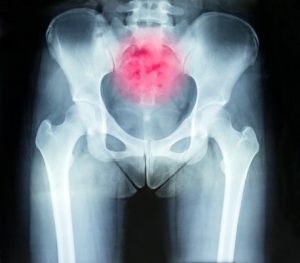
Sacroiliac (SI) joint pain symptoms
SI joint pain most often begins in the lower back and buttocks and is typically only on one side of the body. The pain can reach up to the lower hip, groin, and upper thigh as well. Numbness, tingling, and weakness in the affected leg are also symptoms associated with SI joint pain. These symptoms can worsen when sitting, sleeping, walking, or using stairs. Those with SI joint pain may also find it painful to ride in a car.
SI joint pain causes
SI joint pain has both arthritic and non-arthritic causes, including:
Degenerative arthritis: Also known as osteoarthritis, the breakdown of the cartilage in the SI joints can result in pain and is often worsened by aging, obesity, traumatic injury, misaligned or malformed joints, or repeated stress on the joints caused by repetitive movements.
Ankylosing spondylitis: SI joint pain is one of the first symptoms of ankylosing spondylitis, a type of arthritis in the back that causes the joints and ligaments to become inflamed. Ankylosing spondylitis is often diagnosed through imaging that reveals sacroiliac joint inflammation in males between the ages of 15–30.
Psoriatic arthritis: This form of arthritis also causes joint pain and swelling, along with scaly skin patches. It can cause the inflammation of SI joints, triggering pain and stiffness.
Gout: Arthritis caused by a buildup of uric acid crystals in the joint is called gout, and while it most often affects the big toe, gout can also cause pain in the SI joints.
Trauma: Outside stress on the SI joints and ligaments, ranging from a misstep off a curb that jams the joint to a fall or even car accident.
Mechanical stress: Severe stiffness due to arthritis or surgical spinal fusion can cause added stress on the SI joint, which may progress into degeneration and pain.
Diagnosis of SI joint pain dysfunction
To diagnose whether the source of your pain is the dysfunction of the SI joint, your doctor will review your medical history and perform a physical exam. During the exam, your doctor may have you stand and move in different positions and point out where you feel pain. They may also manipulate the joints and feel for tenderness in the region of the SI joint.
An MRI, CT scan, or X-ray may be ordered to check for other spine or hip problems and confirm your diagnosis. Finally, your physician may make use of an SI joint injection, where the joint is injected with an anesthetic and corticosteroid medication. Your pain level is evaluated before and 20-30 minutes after the injection. SI joint dysfunction can be confirmed if your pain level decreases by a minimum of 75 percent after the injection.
Sacroiliac joint fusion
One technique to treat the pain caused by SI joint dysfunction is sacroiliac joint fusion. The procedure aims to stabilize the joint and minimize the leg or back pain it is causing. One method used is the iFuse system, in which triangular titanium rods are placed across the sacroiliac joint, providing stabilization and reducing pain significantly.
Another common method is the Zyga Symmetry system, which uses two large compression screws to stabilize the joint for a bone graft that results in solid fusion of the joint. Both procedures are minimally invasive and do not require an extended stay in the hospital.
SI joint dysfunction treatment and prevention
Most treatments for SI dysfunction are non-invasive and non-surgical, with the main goal being to restore normal movement within the joint. Some of these more conservative treatments include:
Ice, rest, and heat: Press ice or a cold compress on the affected area for 15 to 20 minutes on, 15 to 20 minutes off, and repeat as needed in order to help reduce the inflammation around the joint. Be sure to get plenty of rest to prevent the dysfunction from worsening due to repetitive movement or overuse of the joint. After the first period of acute, intense pain, a heat wrap or warm bath may help ease the pain and aid in the return to normal activities.
Medications: Over-the-counter pain medications such as acetaminophen and ibuprofen may help reduce pain and inflammation.
Chiropractor visit: An adjustment by your chiropractor may help in reducing the pain and stiffness in the SI joint, especially when it is fixated or “stuck.” However, if the joint is hypermobile, this may just further the irritation and make your pain worse.
Braces: If the joint is loose, the use of an orthotic brace worn around the waist can help to stabilize the area and limit movement, reducing irritation and inflammation.
Physical therapy: Light physical therapy may help to strengthen the joint and provide stabilization from stronger muscles. Low impact aerobic exercise can also increase blood flow to the area and accelerate healing.
Sacroiliac joint injections: As well as being a diagnostic tool, SI joint injections can provide patients with immediate pain relief and reduce inflammation around the joint.
Sacroiliac joint pain dysfunction can be a side effect of many arthritic conditions, or simply be due to trauma and mechanical stress on the joints and ligaments. Doctors can easily diagnose the pain and what may be causing it through a combination of reviewing medical history, imaging techniques, and SI joint injections. Once the cause of the pain has been determined, there are both surgical and non-surgical treatment options available to stabilize the joint and improve its range of motion while relieving pain so the patient may return to their daily activities.
Related: Why you shouldn’t ignore your joint pain